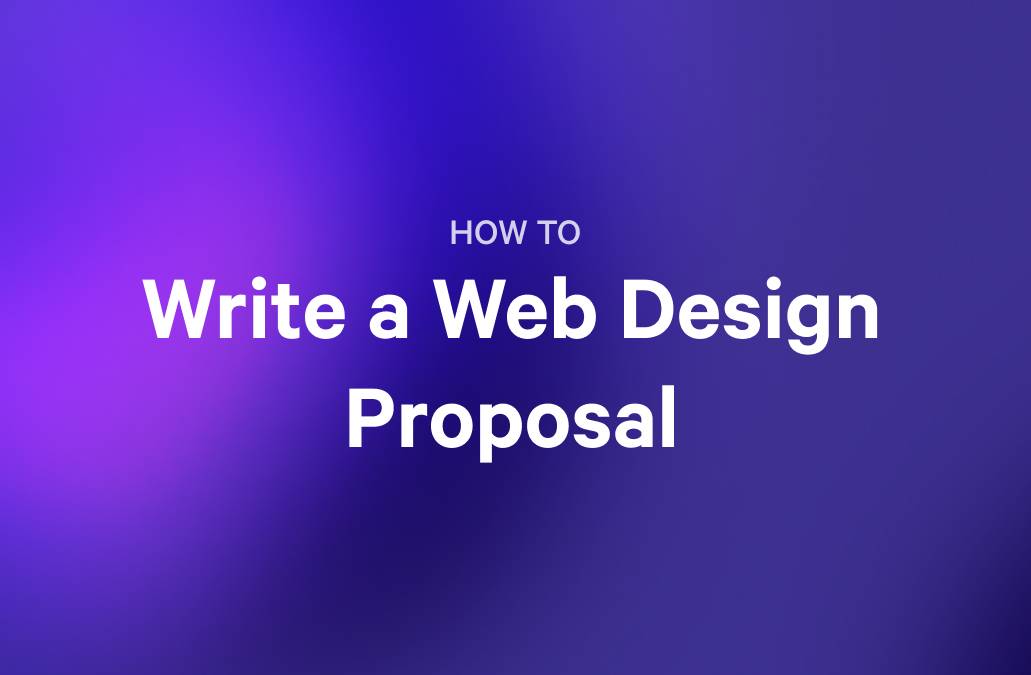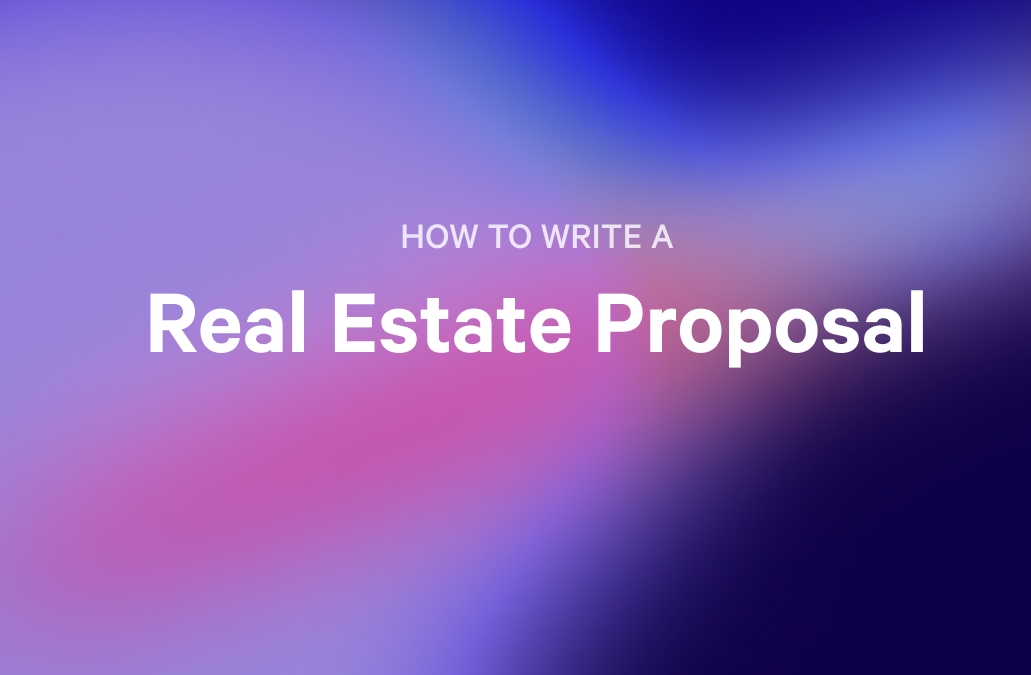A technical proposal isn’t just a document—it’s your chance to prove your expertise and win the deal.
Whether you’re dealing with a complicated real estate development deal or you’re pitching a major acquisition, there’s technical jargon, confusing language, and so many details.
But even the best ideas can get lost if your proposal isn’t clear, compelling, and structured for persuasion.
So, how do you make a great technical proposal?
That’s what we’re going to find out here.
Key Takeaways
- A technical proposal is your opportunity to show your technical expertise and strategic thinking to persuade prospective clients.
- The best technical proposals are thorough, clear, and interactive, making the complex simple and engaging for prospective clients.
- Qwilr offers an all-in-one sales solution firms can employ to create proposals, using our templates and features like QwilrPay and ROI calculator.
What is a technical proposal?
A technical proposal is a document that outlines the exact details of your product or service, often trying to convey a “technical” concept.
It accurately presents a technical problem — finance, business acquisition, real estate development — in ways the client can easily understand.
Then, it presents a technical solution with clear reasoning, steps, and benefits.
It’s important to realize that a technical proposal does require technical expertise, but it doesn’t have to be full of technical writing. Some of the sections will surely call for industry or project-specific jargon. But many won’t.
After all, it is still a sales pitch. You don’t want to lose your crowd by being too esoteric.
Types of technical proposals
While you might think technical proposals exist only in highly technical industries, like IT or hard sciences, the scope is much wider. Most technical proposals can run 10 to 20 pages long because they need to be highly detailed.
Solicited
A solicited proposal is a response to a formal request from a client, often in the form of a Request for Proposal (RFP).
Sometimes, the Request for Proposal (RFP) will require your proposal to be technical. When you receive an RFP from a client, you’ll notice sections (and subsections) that call for number crunching, data, case studies, and more. This information may be dense and complex or highly technical.
Unsolicited
An unsolicited proposal is one that a business or individual submits without being formally asked.
Because these proposals aim to persuade a key decision-maker to consider a solution they may not have actively sought, they often need to prove expertise through technical details.
Business and sales
A business or sales proposal is a document designed to secure a deal, partnership, or investment.
Some proposals—like those for financial mergers, software solutions, or manufacturing contracts—demand technical documentation, performance metrics, and risk assessments. Others, such as marketing or retail expansion proposals, may focus more on branding, customer engagement, and revenue growth strategies rather than complex technical details.
Real estate development
A real estate development proposal presents a structured plan for building, renovating, or expanding a property.
Real estate development proposals are almost always going to be technical proposals. You’re doing so much more than developing real estate. You’re running case studies on neighborhoods, environmental impact, economic outcomes, and more.
Decision-makers need to see clear data on projected costs, infrastructure requirements, and long-term benefits before approving large-scale developments.
Research
A research proposal outlines a plan for investigating a specific question or hypothesis, typically for academic, scientific, or corporate research projects.
These proposals require a thorough breakdown of objectives, methodologies, and expected outcomes. Whether the research is in biotechnology, economics, or artificial intelligence, the proposal must detail data collection methods, analytical techniques, and how findings will be applied in practice.
When to draft a technical proposal
Before you get to drafting, understand that creating an impactful technical proposal takes time, often days or weeks.
So, you don’t want to simply send out dozens of drafts to every potential client, wasting time and resources. Unless you have an RFP in hand, nail these basic points of interaction down before sending out an unsolicited technical proposal:
- You’re familiar with the client
- You have a sense of the client’s needs
- You feel confident you can over-deliver on those needs
- You’ve been in touch with the client
- You’ve got a soft yes from the client
Once you’ve hit each of those marks, you can get your team started with the drafting process!
Creating your technical proposal
While you should always draft proposals that are unique both to your team and to your client for their specific needs, there are sections that must be included in every technical proposal.
These sections ensure your document and presentation are professional and representative of your technical expertise. As you structure your proposal, be sure to include these sections.
Draft your cover letter and executive summary
The executive summary introduces your company and provides a brief overview of what the technical proposal is going to include.
You’re offering a snapshot of the client’s technical problem as you see it, your solution, your project timeline, the budget, and why your solution offers maximum benefits to the client. Your goal is to get your client excited to see what’s next.
The executive summary may be a couple of pages long. Before that, however, you’ll want to present a winning cover letter. This opening page is the one that should catch the client’s attention and pull them in. It should quickly identify you and highlight the key points of the proposal.
It should present your value propositions and what makes your proposal better than the competition’s.
Create a table of contents
This section is simple. You want to offer your clients an overview of what’s coming in terms of sections, and which page each section begins on. You can also make it interactive by allowing clients to click on a section from within the table of contents and be directed to that section automatically.
That way, potential clients can bounce around in your proposal to review what matters most to them, taking more time in specific areas before moving on to others.
Note that proposal software like Qwilr’s will often offer the navigation bar option in the design process, allowing you to change headers and cases to your preferences.
Provide technical background
This section is the one that will start getting really technical. It will include a project overview, or project brief, and is perhaps the largest section of this proposal. It should also be the most comprehensive. It offers a clear vision for the project and its objectives.
You’ll want to include the technical problem as you see it (or as the client outlined in the RFP), your inspiration and motivation for taking on this project, and where you see room for improvement over the current situation. This section of the proposal should be:
- Interactive
- Visual
- Detailed
- Specific to the client
Make sure you include any constraints that may come up and your solution for confronting them.
Finally, refer back to any conversations you and the client have already had to garner engagement.
You could use language like, “As we discussed,” or, “You and I agree on this point.”
Show the need for a technical solution
You’ve sold the client on the need for improvement in the previous section. Now, you present the need for a technical solution — yours. You’ll want to show your vision for the outcome, the journey to get there, and each technical aspect of that journey.
You can break down the project into components, if necessary, and outline why certain steps need to come before or after others.
Then, you’ll break down the impact of the solution you’ve provided, as well as the manpower and the costs involved. Show the client in precise detail exactly what’s involved in getting the solution you propose, and why your proposal is the best possible option.
Make sure you include links to case studies and other evidence that your proposal will work and that it is feasible.
Write up a schedule with a clear timeline
Once your client understands a breakdown of the project, it makes sense to move into a timeline discussion. You can show the client when each part of the project will be ready, what potential delays could occur, and when the completion date will be. This section may be critical to the goals of the client, so be sure you understand their need for urgency, if they have one.
Include pricing and a budget
Don’t worry about offering the cheapest proposal. People usually expect to pay for quality, and you’re offering quality. This is why you’ve spent pages selling the quality before presenting your pricing strategy. You’ve even outlined the costs of a project like this.
Now, you connect those costs to your price options.
It’s a great idea here to be sure to show your clients that the price they’ll pay for your expertise is an investment.
When you create a proposal with Qwilr, you can include dynamic quote blocks and interactive pricing with ease.

Share the benefits
Before moving on to introduce your team, take a moment to highlight the benefits of working with you, moving forward with your vision, and forming this partnership. It reiterates the value of the pricing model you’ve just outlined.
You can do this by using an ROI calculator like the one offered by Qwilr.
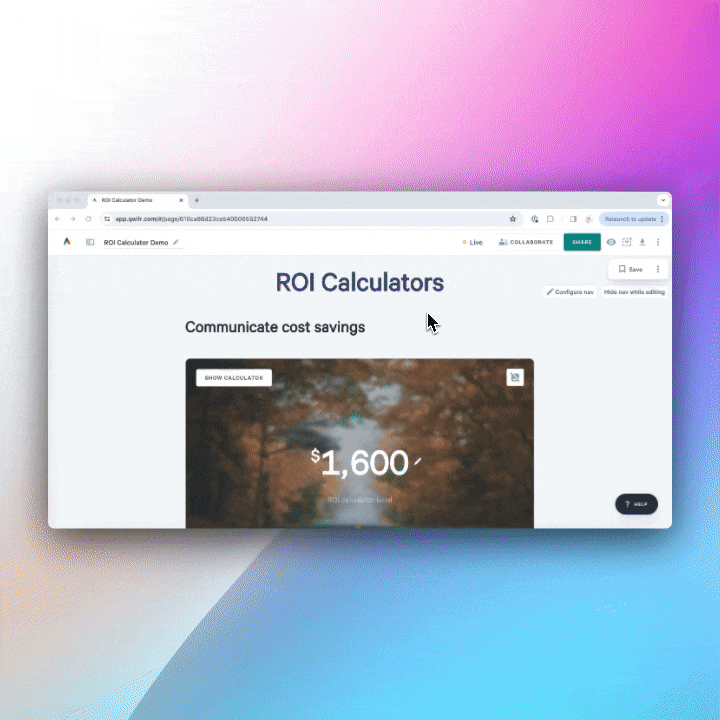
Introduce your team
Now, it’s time to bring your team into the discussion. If your team is with you during the presentation, you can introduce them in depth. Important points to mention during these introductions include:
- Each team member’s area of expertise
- Which part of the project each team member will be working on
- The accountability hierarchy (who answers to whom)
- Who to contact for various questions or concerns during the project
Terms and conditions
One of the final sections of the technical proposal will be the fine print — the terms and conditions. This section includes items like guarantees, warranties, expectations for payment, taxes, and anything else not clearly covered in the scope of the project. At this point, you’ve already discussed these terms. This is just the written version.

Easily send plain-text, formal agreements alongside your interactive technical proposal
E-signature and payment option
Finally, you can offer the client the opportunity to digitally sign the proposal, turning this document into a legally binding, secure contract between your company and theirs. E-signatures are the best option in the case of proposals because you can send the entire document to the client and then give them time to review it and sign it within an agreed-upon time frame.
Even better, the prospective client can offer up their first payment alongside their e-signature. Qwilr offers a native payment processing software called QwilrPay, so you can set up a “sign and pay” module in your proposal that makes it easy for the client to say yes.
With Qwilr, you’ll be able to create an audit trail with our e-signature and agreements integration, and you’ll get real-time notifications when a client signs.
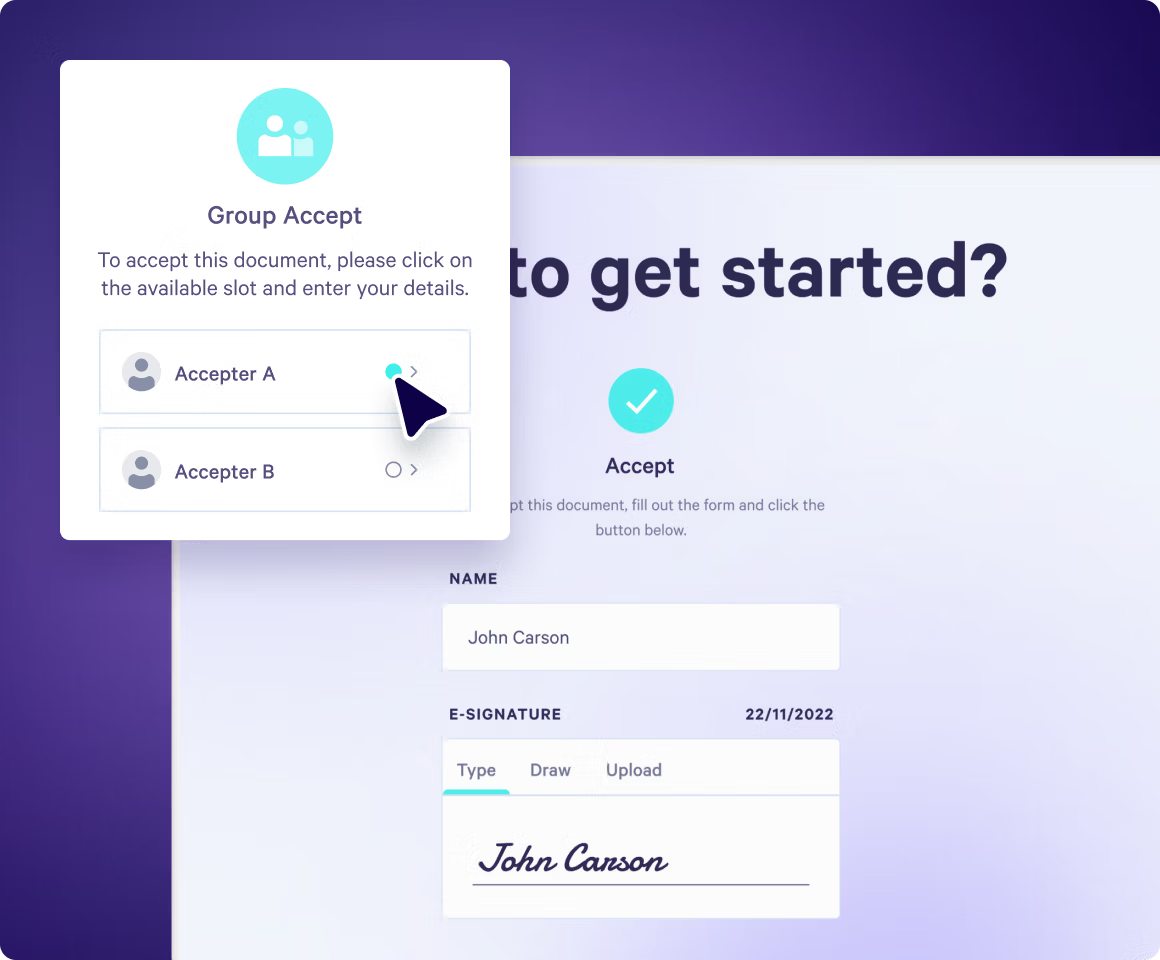
Tips for technical proposal writing
Get a soft agreement first
Imagine inviting someone you’ve never met to the movies only to find out they don’t like movies. Or applying to a program that’s highly unlikely to accept you. It would be a waste of time!
For this reason, you always want to make sure you get a soft yes, or an RFP, from the client before spending days and a team of excerpts to draft a proposal.
Not sure how to get that soft yes from a cold client? Consider gap selling.
Know your client
Even if you’ve never met the client, you want to do your due diligence. Study the company, understand the background, and know who they’ve worked with on similar projects in the past. The more you know about the client, the better your proposal will be because it will be specific and personal.
Have a pricing strategy
Don’t just pull numbers out of the air. Before drafting a technical proposal, understand:
- Why the costs are what they are
- How to budget for a project like this
- How the project might go over budget
- What your profits will be
- What your competitors are charging
The more familiar you are with all the numbers, the better you’ll be at selling them.
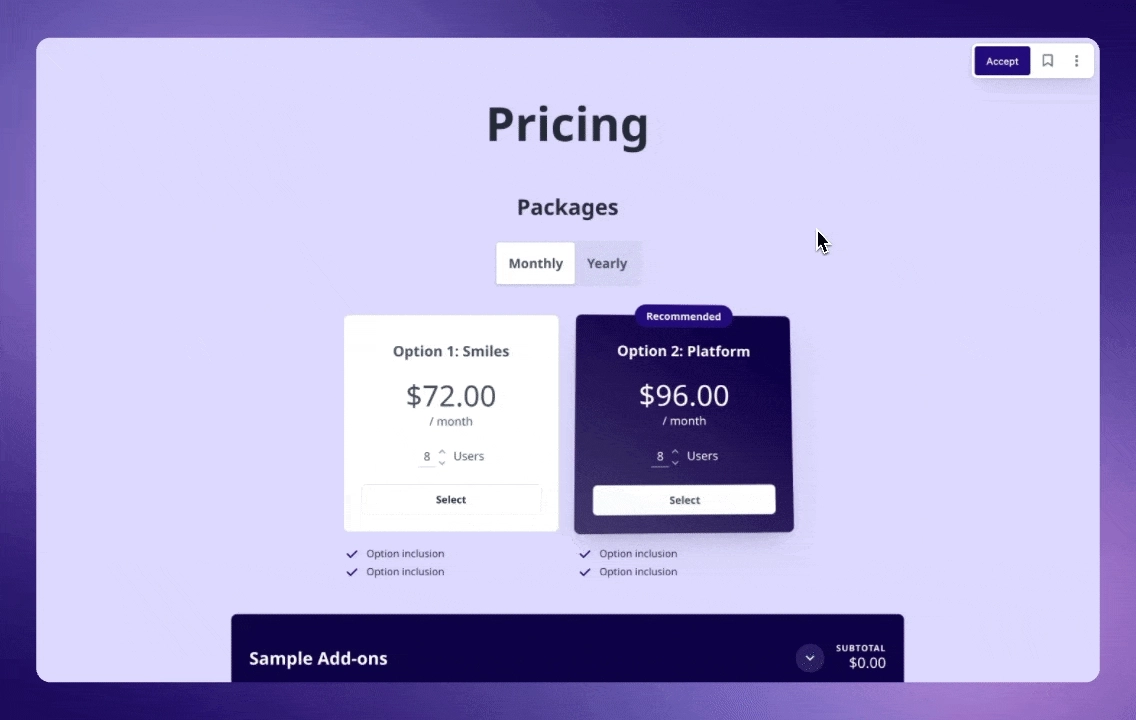
Offer Options
And remember, you don’t have to offer a single flat rate. You can, and should, give the client options. You can come up with a base price and include add-ons. You might want to create levels of expertise and luxury. Or, you could offer different time periods for payment, like segmented pricing or a contract option.
Give the client pricing plans to choose from, and they’re more likely to trust you to hold up your end of the bargain. With Qwilr, you can even make this section interactive, so clients can adjust plans and add-ons and see how the price changes.
Be open to compromise
Even with all your pricing and proposal options, be prepared to have the client present their own vision and their own pricing options. They may want to pay you half now and half later. Maybe they love your proposal, but they want to change one area of the plan. Be open and flexible, keeping in mind that they’re the client, and you’re here to serve.
Be realistic
Don’t promise the world! And definitely don’t overpromise. You run the risk of under-delivering. Take into account how you’ve performed in the past, and make your proposal based on what you know you can realistically deliver. In fact, you’re better off under-promising so you can overdeliver.
Use a template
In this time of automation and highly intelligent AI, there is no reason to build a proposal from scratch in MS World or on Google. There are dozens of proposal software companies out there, including Qwilr, that have perfected the art of creating a proposal.
At Qwilr, you’ll find over 140 templates to choose from, all of which you can customize to your liking, to your brand, and with features like QwilrPay and integrations with CRMs like HubSpot and Salesforce. There’s no reason to reinvent the wheel when you can save time and manpower creating template automations.

Know the competition
It has been said that a smart lawyer knows what the opposition will say before they say it. That way, they’re always ready to counter. The same should be true in sales. You’re competing against colleagues who may have more experience, more clout, or more money to throw at a project.
Be ready to show that you know what your competition is proposing, so you can explain why your proposal is better.
Sell, sell, sell!
Never forget during this whole process that you are selling. Proposals are sales pitches, so every aspect of this proposal is aimed at selling your vision, selling your project, and selling your price. When you keep this in mind, you’ll understand how each section supports your pitch.
Make a technical proposal that wins you deals with Qwilr
In the end, you’re already putting in a ton of work to make the technical simple for your prospective clients. You don’t have to put in even more work to create a dynamic proposal from scratch.
Qwilr has been recognized as a leader in Proposal Software. We offer an all-in-one sales solution that assists your journey at every stage, from accepting an RFP to closing the deal.
Sign up for a free trial today to check us out.
About the author

Brendan Connaughton|Head of Growth Marketing
Brendan heads up growth marketing and demand generation at Qwilr, overseeing performance marketing, SEO, and lifecycle initiatives. Brendan has been instrumental in developing go-to-market functions for a number of high-growth startups and challenger brands.

